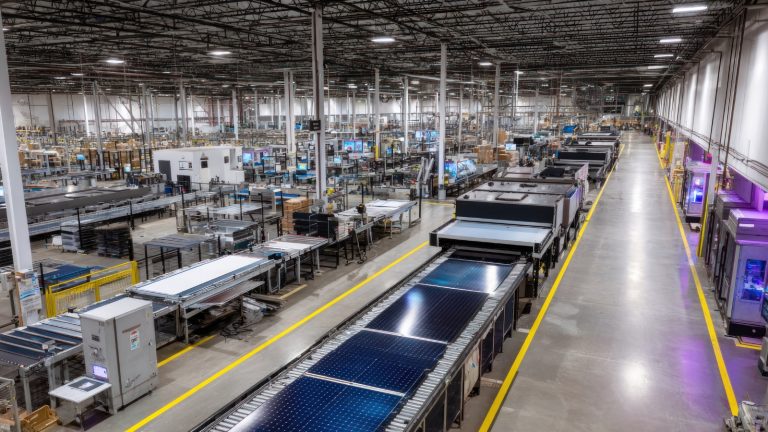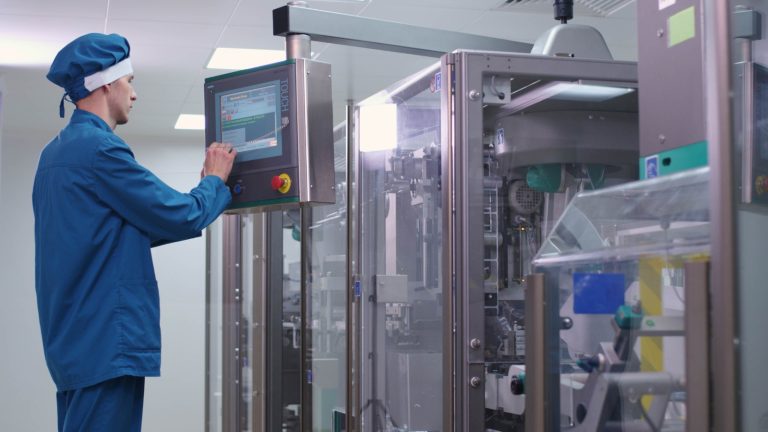Has this ever occurred in your factory? The orders piled up, yet you have to stop the machines in the middle of the production shift as you received last-minute change requests? It is indeed chaotic, but this is the reality of the manufacturing world. When you rely on traditional methods, inflexible production setups will not adjust according to the customer demands or the overnight market changes. This is why the manufacturing industry requires a flexible manufacturing system to stay relevant and cut waste while enhancing productivity on production floors.
This article looks into the seven steps to master a flexible manufacturing system for the expected outcome.
What is a Flexible Manufacturing System?

- As its name suggests, it is a production programme that comparatively has a greater capacity to be adjustable and adaptive to unexpected changes. Unlike traditional methods or systems, a flexible manufacturing system comes with the ability to make a smooth shift between various products or product variations. The best benefit of this is that it offers such robustness with nearly zero downtime or delay.
- Since the adjustable system has embedded capabilities such as digitally-controlled machinery and automated material handling, it does not require human intervention in production changes. Plus, it is totally unnecessary to have separate production lines for different product demands with this system. As the latter offers real-time monitoring, manufacturers can stay highly responsive to shifts in the market or sudden changes from the customer’s end. Not making major disruptions, the flexible manufacturing system adapts to product changes along with frequent design or production updates as well.
- As an added benefit, these systems are enriched with the power to integrate CNC machines and robotics, and they directly contribute to the quick reconfiguration of machines, which makes the production adjustments swift. It brings the capabilities of data analytics, sensor networks, and monitoring systems under a singular interoperable environment to offer real-time production control, which progressively underpins the manufacturers in detecting bottlenecks on the spot and making immediate adjustments to promote continuous and efficient process execution. In this fast-moving manufacturing landscape, a flexible manufacturing system has emerged as a strategic imperative to stay competitive.
7 Steps to Master a Flexible Manufacturing System

Assess the Current State
Do you have a good understanding of how your production works right now? If not, this is the place where you need to start the FMS implementation process.
You begin by analysing the entire process, including machines, workers, etc., and eventually move your assessment to understand how materials move from one step to the next. During the evaluation, keep a closer look at the challenges, such as slow product changeovers, long waiting times or frequent breakdowns. Also, you cannot ignore information on quality issues, machine performance, and production time.
Since the ultimate goal of this implementation is to design and set up your flexible manufacturing system for expected results, you can have a thorough understanding of where your production line needs augmentation or retouches.
Define Objectives and KPIs
You step into the second phase carrying a better grasping of your current state. Now you are able to set clear goals for your flexible manufacturing system. Do you wish to increase output or reduce downtime? Or is your expectation to improve quality or make product changes faster? No matter what your target is, this is where you must create Key Performance Indicators (KPIs), bringing the key aspects like changeover times, machine utilisation or defect rates under a sharp radar.
When you set such clear targets, you can check whether the FMS aligns with your goals as expected.
Plan a Roadmap and Project Team
When initiating a project, manufacturers must have a proper plan in the first place. This is where a step-by-step roadmap comes into play, and it will guide you to fix your flexible manufacturing system. Here, you do not have to start big; instead, you can always start small with a pilot project. If it works for your manufacturing company, you are able to expand after initial testing.
However, it is a must when implementing a flexible manufacturing system that your business has a strong project team. This must include experts from various departments, ranging from production, maintenance, quality, engineering, IT, etc. If you do not assign clear roles to each one involved, the roadmap is not completed. As a part of the plan, the company should draw lines for timelines, budgets, and key milestones. This way, on the stage, you will know whether you progress as aimed.
Select and Integrate Technologies
If a manufacturer targets a successful implementation of FMS, then they must have the right machines and tools in place. Depending on the subdomain, this may vary, yet it includes CNC machines, robotics, and automated material handling equipment. In addition, when it comes to technologies, the company have to opt for software that can control and monitor production in real time.
The fact that many will ignore in this phase is that checking whether your new technologies can integrate well with the existing systems, like ERP and MES. Also, the software must be scalable and flexible as the business will grow with time.
Configure Systems and Data Infrastructure
Here comes the software setting up stage. It is a requirement to install the equipment and software and connect them to the main control system. There must be a data network like, IoT, to be able to drag production information from sensors and machines. This is why the manufacturers are supposed to configure the software as it blends with your certain production goals and KPIs.
Since there should not be any loopholes in the system, you need to guarantee that all equipment and software are integrated and configured properly. Establishing a strong data infrastructure is one way to track performance, spot irregularities, make faster decisions and boost efficiency collectively.
Train Staff and Manage Change
No flexible manufacturing system can function on its own, and this is where your workers are vital. As the most essential step, manufacturing companies must give proper training to their operators, engineers, and managers. This way, they are aware of the execution of each equipment. However, it is a priority that they move forward with a good understanding of the benefits of FMS, like faster production and fewer errors.
On one hand, it is better to communicate openly to stop resistance and build confidence. Yet, the most crucial part is establishing safety rules, precautionary methods and the strategies to implement if the FMS goes off-course.
Pilot, Test and Continuous Improvement
If the above six steps are accomplished, do not hurry to go fully live. That is one mistake most of the manufacturers commit. Instead of that, you should test your system in one area or maybe with one product line. This strategy will give you a rough understanding of whether your flexible manufacturing system functions as you expected. Then, track the performance using your KPIs and request some feedback from the workers who are actively involved in the implementation, such as operators. If anything is disoriented, you still have room to fix problems early. Now that your pilot is successful, you are able to expand the system to more production lines.
However, keep a watchful eye on the performance of the machines and the KPIs. Give upgrades when needed and check whether the new product quality aligns with your standards.
Cerexio MES for Heightened Manufacturing Flexibility

Whether your manufacturing company is struggling with last-moment production changes and if it delays the whole shipment, it is time to integrate more flexibility in your process. Cerexio Manufacturing Execution System comes with heightened flexibility to changes with zero waste, no errors or delays and improved quality and cost savings. For any production amendment, Cerexio MES is the best solution.
Implement Your Flexible Manufacturing System at the Right Time

It is in vain if you waste your resources like labour, money and time on sudden market changes. You will see a giant improvement in production completion if you implement an FMS at the right time without wasting any more time. Although it is a small investment, it is actually a giant leap forward.
FAQ about Flexible Manufacturing System
There are three types of FMS, which are known as Dedicated FMS (Used for high-volume, long-term, yet limited products), Engineered FMS (customised for special parts) and Modular FMS (high in adaptability).
Work machines are the core element of any FMS, and they include various robots, computer numerical control (CNC) machines and various tools for assembling.
The automotive industry is one of the domains that employs FMS to streamline its production lines and cater to different customisation requirements. As the FMS offers automated systems and real-time monitoring technologies, the automotive companies can stay away from production errors and enhance product quality.
